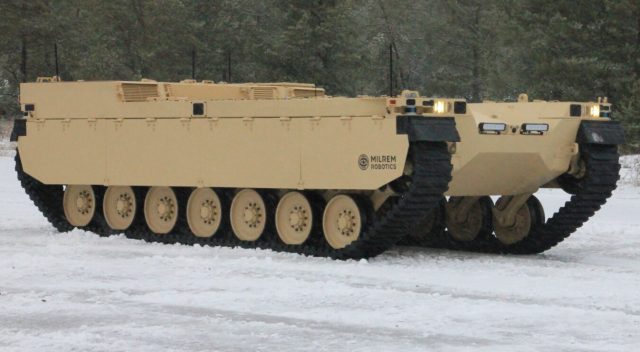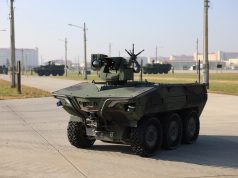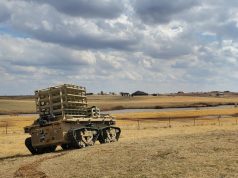Estonian unmanned ground vehicle developer has unveiled the new medium class Type-X robotic combat vehicle (RCV) after it passed its initial mobility tests.
Designed to support mechanized units, The Type-X RCV was first announced in the summer of last year.
Milrem says it will become an intelligent wingman to main battle tanks and infantry fighting vehicles capable of taking on the most dangerous tasks and positions, which result in lower lethality risk.
“The Type-X will provide equal or overmatching firepower and tactical usage to a unit equipped with infantry fighting vehicles. It provides means to breach enemy defensive positions with minimal risk for own troops and replacing a lost RCV is purely a logistical nuance,” said Kuldar Väärsi, CEO of Milrem Robotics.
The Type-X can be fitted with a cannon up to 50 mm. The UGV is also airdroppable with up to a 30 mm cannon. The C-130J and the KC-390 can carry one Type-X, an A400M two and a C-17 5 of them.
“The vehicle will be equipped with intelligent functions such as follow-me, waypoint navigation, and obstacle detection with Artificial Intelligence being part of the algorithms,” Väärsi said.
With a weight of 12 tons and a height of 2.2 meters, the Type-X manages rough terrain well, while a rear engine provides low visual and heat signature.
“In addition, the Type-X is approximately three to four times lighter and its cost significantly lower than that of a conventional IFV,” Milrem said.
The company added it leveraged knowledge gained from developing its flagship product the THeMIS unmanned ground vehicle, intended to support dismounted troops, that has already been acquired by ten countries, seven of which are members of NATO.
Milrem is leading a European defense industrial development program (EDIDP) project to develop a standardized European unmanned ground system. The project will undertake to standardize a European wide ecosystem for aerial and ground platforms, command, control and communication equipment, sensors, payloads, and algorithms.



























